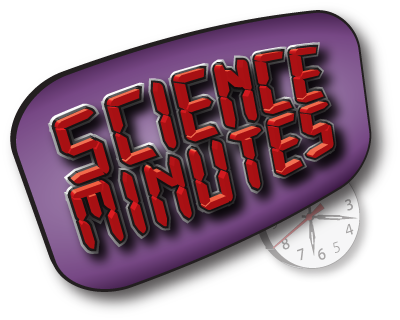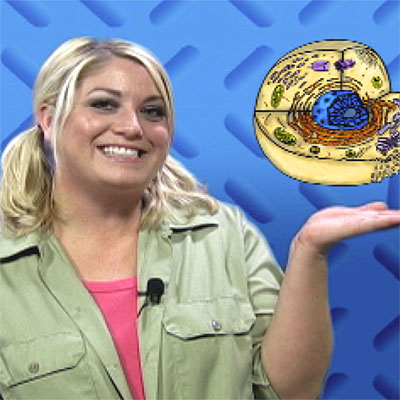 |
 |
Science Minutes DVD
Episode 3: Cells
Focus Question: How do cells help living things function?
Standards
National Science Standard
Content Standard C: Life Science (Grades 5-8)
Next Generation Sunshine State Standard
| Grade 5: | SC.5.L.14 Organization and Development of Living Organisms |
| Grade 6: | SC.6.L.14 Organization and Development of Living Organisms |
| Benchmarks SC.6.L.14.1, SC.6.L.14.2 |
Vocabulary
Cell a small usually microscopic mass of protoplasm bounded externally by a semipermeable membrane, usually including one or more nuclei and various other organelles with their products, capable alone or interacting with other cells of performing all the fundamental functions of life, and forming the smallest structural unit of living matter capable of functioning independently
Nucleus a cellualr organelle of eukaryotes that is essential to cell functions; the part of the cell that carries its genetic information and controls everything the cell does
Organelles a specialized cellular part (as a mitochondrion, lysosome, or ribosome) that is analogous to an organ; the internal structures of a cell
Organism a living being, plant or animal
Organ in a plant or animal, a specialized structure that performs a particular function, such as the heart
Phytoplankton small, free-floating aquatic plant life in the ocean
Plankton The collection of small or microscopic organisms, including algae and protozoans, that float or drift in great numbers in fresh or saltwater, especially at or near the surface, and serve as food for fish and other large organisms
Zooplankton small, planktonic animals that live in the ocean; feed on phytoplankton
Classroom Activity
Supplemental Links
- Rader’s Biology4Kids.com: Cell Structure, www.biology4kids.com/files/cell_main.html
- Rader’s Biology4Kids.com: Cell Functions, www.biology4kids.com/files/cell2_main.html
- Eureka! Science: Cells, www.eurekascience.com/ICanDoThat/cells.htm
Further Investigation with Online Activities
- The Children’s Museum of Indianapolis, Focusing on the Cell,
http://www.childrensmuseum.org/teachers/unitsofstudy/biotechnology/lesson2e1.htm
Oral Assessment
Transcript
Kasey
Ever wonder how the little things in life work? You know, like your iPod, your cell phone or your computer? Well, these things are made up of smaller components like hard drives, batteries, circuit boards, so on and so forth. So what about the bigger things in life, like the living things? Believe it or not, living organisms are made up of smaller things too. The smallest component of a living organism is a cell, those good old building blocks of life.
Kasey
Every living thing, plant or animal, is made up of tiny, little cells. Most cells are ten times smaller than the period on your computer keyboard. There are many different types of cells that have different jobs to do different things and all of these cells work together to help a living thing function.
Kasey
All cells have basic parts to help it do its job. First off, most cells have a nucleus which acts as a command center, kind of like a brain or a motherboard. Just like internal organs of an animal, cells need internal structures that help them with their basic functions. These structures are called organelles.
Screen
Organelles: A specialied subunit within a cell with specific functions and often a separate membrane.
Kasey
Each organelle has a specific job to keep the cell healthy and alive. In turn, the cell itself has a job. Cells that are similar will work together to form a larger strucutre like an organ. For example, millions of cardiac or heart cells will work together to form a heart.
Kasey
While cells are the building blocks of all living things, they can also live as individual beings. These small, one-celled organisms, or colonial organisms, are the lowest-levels on the marine food chain. Even though these little guys seem small and insignificant, without them there would be no life on earth.
Kasey
So don't forget about the little things in life. Some help us to get through the day while others simply help us to exist.

